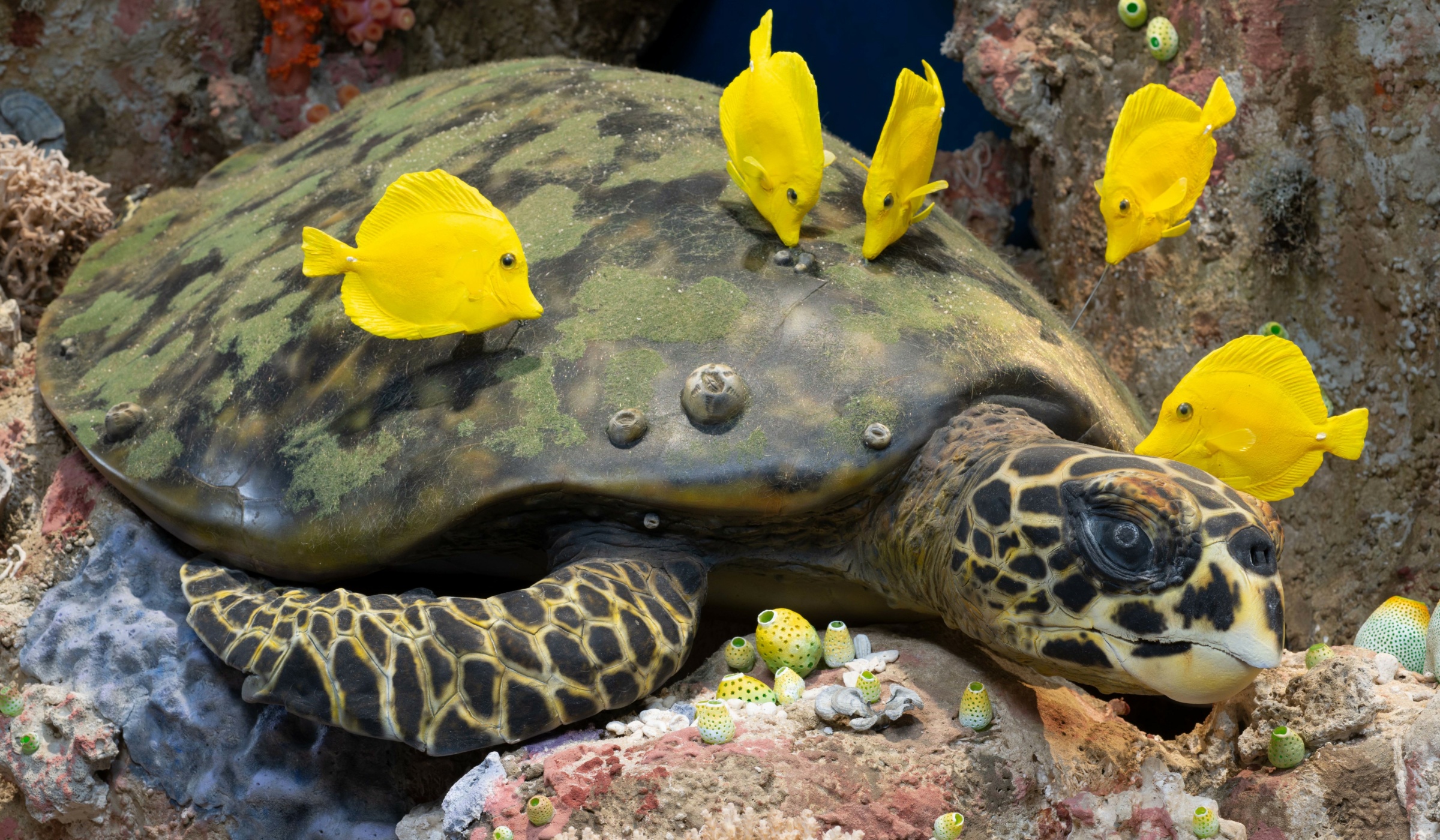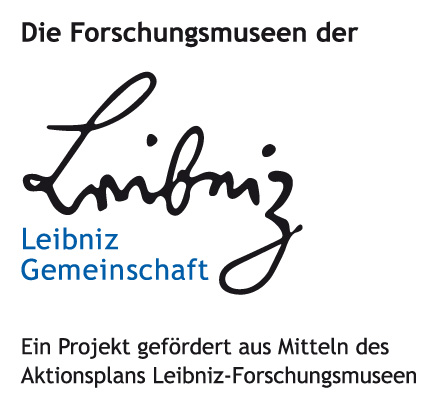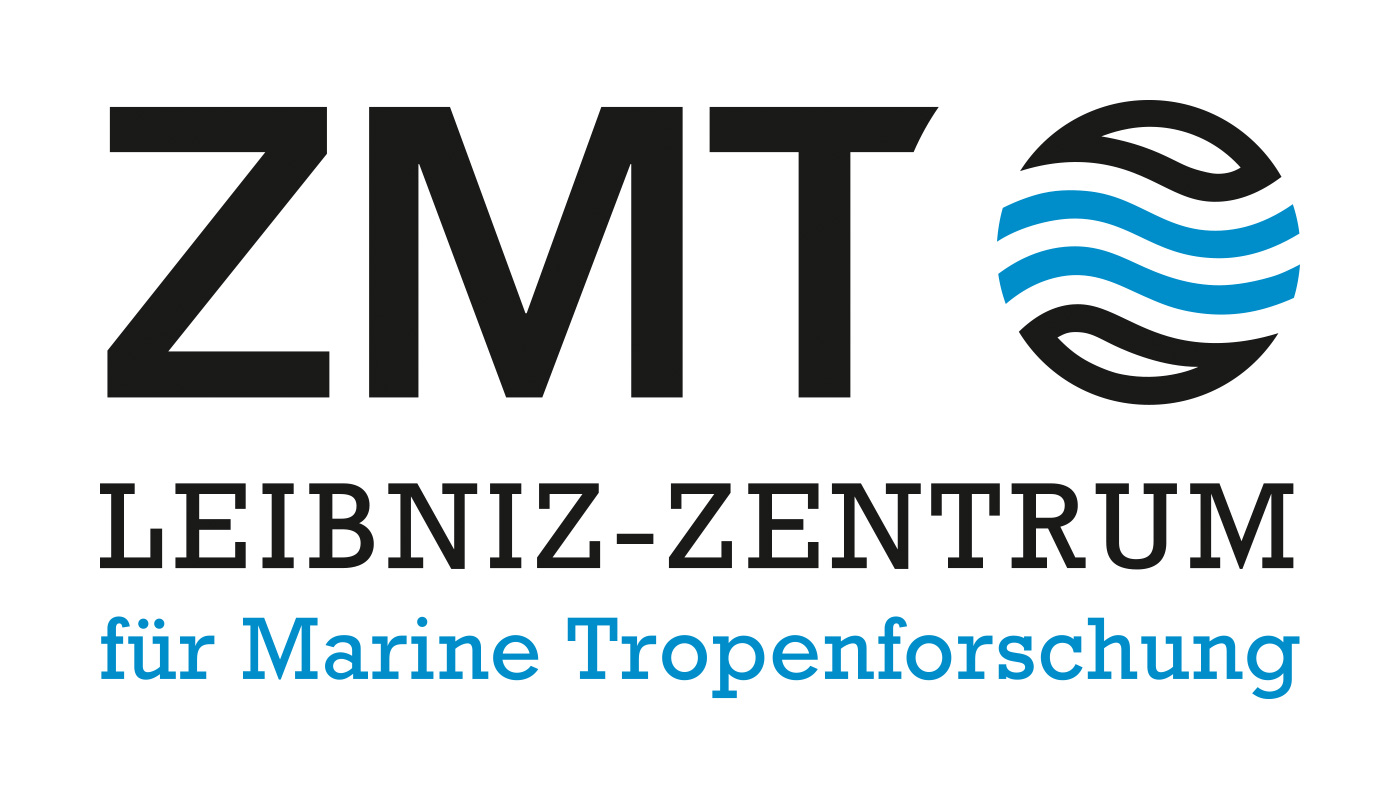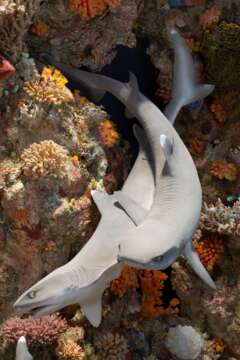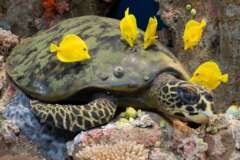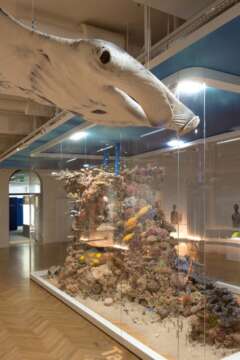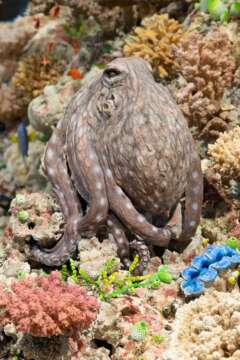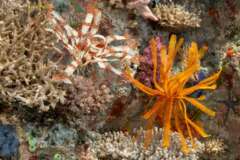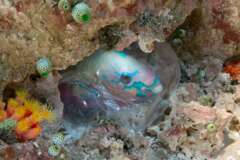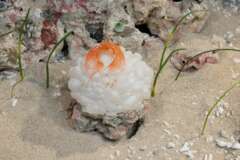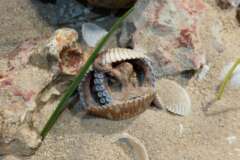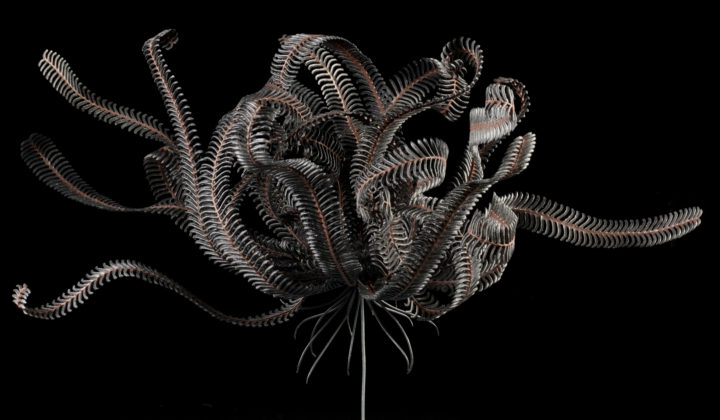Dive Into the Coral Reef Habitat
The Senckenberg Natural History Museum in Frankfurt opens the new permanent exhibition “Coral Reef” on July 15, 2021
Frankfurt, 07/14/2021. Along with tropical rainforests, coral reefs are among the most biodiverse and productive ecosystems on our planet. They cover less than 0.1 percent of the ocean floor but are home to one-third of the animal life in the oceans. This diversity of organisms, the threats to this endangered habitat, and opportunities for ecosystem recovery are brought to life in the fascinating new coral reef exhibition. Around 3,000 individuals can be discovered in a habitat display that is six meters wide, three meters long, and up to 3.3 meters high. Interviews with protagonists from Europe and the Pacific region provide insights into the living environments there and how the reef ecosystem is being handled. The new permanent exhibition was created as part of the modular conversion project “New Senckenberg Museum Frankfurt” – in cooperation with the Leibniz Center for Tropical Marine Research (ZMT) in Bremen and with Trier University of Applied Sciences.
Centrally located in the middle of the room is the exhibition’s main object – a habitat representation of an Indonesian coral reef by day and by night. Reef inhabitants can be seen interacting with one another: from a hawksbill sea turtle with cleaner fishes at a cleaning station to sharks on the hunt or a coconut octopus in a shell. Symbiotic relationships are also depicted, such as the tiny pygmy seahorse that lives in the coral fans of a soft coral, a gorgonian. A 1:1 model of a reef manta ray hovers next to the reef. It appears to get ready for a dive to catch plankton from the nutrient-rich water on the reef slope.
Prof. Dr. Katrin Böhning-Gaese, responsible for the field of Science and Society on the Senckenberg Board of Directors, calls the new exhibition space a “milestone in the development of the new Frankfurt museum.” “The exhibition is not just limited to the representation of a habitat but also addresses socio-political issues such as the threats the habitat is facing, as well as possible measures to save the precious ecosystem. It also enters into dialogue with protagonists who live and work around coral reefs,” continues Böhning-Gaese. At media stations, a fisherwoman and an underwater filmmaker as well as researchers and a conservationist from Tahiti can be heard. “It was important for us to present this habitat in all its facets,” adds museum director Dr. Brigitte Franzen. “This includes the living world of animals and the living world of humans as two inseparable spheres. We enable our visitors to discover right here in the middle of Frankfurt an important and threatened part of the earth that is not so easily accessible – we invite them to literally ‘dive’ into our exhibition space, to experience the coral reef ecosystem, and to understand the social-ecological connections,” says Franzen. “The exhibition defines the path for how we will understand and develop the New Museum.”
Curator Philipe Havlik emphasizes the different levels on which visitors can engage with the coral reef: “It is possible to enjoy the habitat display like a large hidden-object picture and discover the many stories we tell with our objects. Those inclined to do so can deepen their knowledge and pick up our identification key or the Mediaguide and identify individual objects.” The room’s design addresses these different levels: Benches invite visitors to linger; a beamer projects facts related to the ecosystem onto the ceiling; at an interactive station, visitors can experiment to see what happens to a reef when the water temperature increases; and media stations provide opportunities to meet with reef protagonists. The room’s layout and the accompanying digital media were developed by students of the “Intermediadesign” course at Trier University of Applied Sciences under the direction of Prof. Daniel Gilgen. “A great collaborative project,” Gilgen praises the cooperative effort. “Here, our students were given a special opportunity to put their ideas into practice with scientific support and to see them realized in a permanent exhibition at the Senckenberg Natural History Museum,” he continues.
Zoological taxidermist Hildegard Enting and her team, consisting of Kay Weber, Anna Frenkel, Sylva Scheer, and Ute Raudonat, spent three years working on the reef, building models, and coloring and processing existing material. “For us, the close cooperation with our scientists was very important,” explains Enting. “We asked the respective experts from Senckenberg and the ZMT about the different species and critically discussed our models with them – in some cases down to the smallest detail, even though we know that these subtleties will hardly show up in the exhibition later on. We always wanted the objects to be realistic and also correct from the researchers’ point of view,” explains Enting.
Prof. Dr. Angelika Brandt heads the Department of Marine Zoology at Senckenberg and points out that 2021 marks the start of the UN Decade of Ocean Exploration. “This is a perfect time to now also open our new reef exhibition, following the Deep Sea and Marine Research exhibitions,” Brandt explains. “This allows us to raise awareness that threats to coral reefs due to climate change, ocean acidification, overfishing, habitat destruction, invasive species, and pollution are global challenges. It is up to marine science, in collaboration with policy makers, society, and industry, to make the transformation to, for example, a cleaner and healthier ocean by 2030.”
Dr. Sebastian Ferse from the Leibniz Center for Tropical Marine Research (ZMT) in Bremen conducts research at the interface between ecosystems and humans, between ecology and the social sciences. The ZMT is a science partner of the exhibition and has advised on the creation of the new topical room. The interaction of humans and coral reefs is the focus of the exhibition and runs through all accompanying media. Sebastian Ferse examines the threats to coral reefs and explores the possibilities of restoring them. In doing so, he sees a global and a local approach to action. “Globally, we must succeed in getting politicians to act more quickly and consistently on climate policy.” On site, however, Ferse is also exploring the possibilities and opportunities of local reef management. “Local measures such as the establishment of marine protected areas on site, the protection of habitats such as eelgrass beds and mangroves in the vicinity of the reefs, as well as fisheries management, are extremely important – they make a tangible contribution to the resilience of coral reefs,” adds Ferse.
“Together with the seven other museums of the Leibniz Association, we increasingly see ourselves as places of dialogue that provide impetus for social transformation,” explains Katrin Böhning-Gaese. “Senckenberg’s focus is on the protection and promotion of biodiversity,” she adds. “The Coral Reef exhibition makes an important contribution toward these processes, and it has received significant support from the Leibniz Research Museums Action Plan,” concludes Brigitte Franzen.
New permanent exhibition “Coral Reef,” as of July 16, 2021 at the Senckenberg Natural History Museum in Frankfurt, Senckenberganlage 25, 60325 Frankfurt am Main. Combination tickets: 12 Euros for adults, 6 Euros for children and adolescents (6 to 15 years), and 30 Euros for families (2 adults and up to 3 children). Opening hours: Mon, Tues, Thurs, Fri 9 a.m. – 5 p.m., Wed 9 a.m. – 8 p.m., Sat, Sun, and holidays 9 a.m. – 6 p.m.

